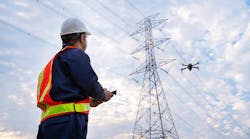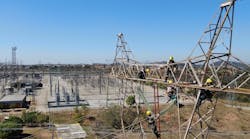According to 2016 EIA data, lighting consumes 10% to 11% of residential and commercial electric energy in the U.S.
When I think about lighting as it currently functions in most homes and businesses, I believe we will look back in the future and wonder why it took us as long as it has been taking, to make lighting systems smarter—a great deal smarter!
For example, in a room with open shades and a lot of windows in the daytime, if I turn on ordinary non-smart lights, they draw the same amount of power regardless of whether it is cloudy or sunny—they do not adjust to a desired level of lighting in the room. How much of that 10% to 11% of electric energy is wasted by lights being set to brighter setting than they need to, or by lights in a big, multi-cubicle office space all being “on” even when large portions of the room are unoccupied?
Newer lighting systems integrate sensors and can automatically make the above-referenced types of adjustments.
In his eye-opening blog this week regarding smart lighting solutions, DNV GL’s Wesley Whited described smart lighting technologies’ larger value-delivery promise of digitalization for a connected world that will transform utility’s current energy efficiency programs into something with a more far-reaching character.
Inspired by sessions at DesignLights.org’s sixth annual DLC Stakeholder Meeting, in Portland, Oregon, utility-led opportunities for smart lighting systems, products and platforms came to the fore in Wesley Whited’s blog, with themes central to our industry implementing the change to what he calls “an energy efficiency plus model.”
Whited sees our industry evolving beyond simply incentivizing energy reduction because utility customers will come to value data as much, if not more, than energy savings. And smart lighting systems are becoming a platform for such value delivery, both for businesses and in the home.
One such major change is the flexibility of the new lighting system designs, which are being manufactured in a field-adjustable fashion, with the OEM producing a single product with a range of options that the contractor selects in the field. The range of selectable options includes the fixtures lumen package, color temperature, and the distribution. These options affect the amount of energy that the luminaire consumes, creating a need for more dynamic EE certification capabilities—and creating a related opportunity for our industry to step up to help fill this need.
Besides field adjustability, Whited sees the push for integrating more sensors into fixtures as providing a big opportunity for the utility industry leadership: “Today, any LED product that lacks dimming is already functionally obsolete. In the very near future, the same logic will apply for LED fixtures that lack integrated sensors. Forward looking lighting programs should think about only incentivizing fixtures that have integrated controls. Sensors are a precondition for connectivity and unlocking the value that IoT can offer be manufactured with a simple, universal port to upgrade sensors. Enter the IoT Ready Alliance – This new organization, launched at Light Fair, is working with manufacturers to create the standard fixture/sensor interface that will fully unlock future value. Utility customers will demand IoT lighting solutions once the market ensures users of the upgradeability of both hardware and software systems.
Whited gives a fascinating example from the publication Nursing Times, nurses waste about an hour a shift looking for equipment—which equates to 40 hours per month—and references how “rises in beaconing technologies, a solution like ‘LiFi’ (think indoor GPS) will make misplacing items much more difficult. Slap an RFI sticker on a crash cart and your smart device will navigate you to desired items. No more lost time and better outcomes for the patient and business. A ‘LiFi’ system is also incredibly energy efficient – it’s made up of LED lighting, advanced sensors, and networked controls. Yet, I doubt that a hospital would make the IoT plunge based solely on energy savings. Customers buy on value – and the non-energy values that an IoT application can deliver vastly outweigh the energy savings potential of these systems. Connectivity will shift values away from “save energy” to “increase my productivity”.
“To remain relevant, utilities will need to evolve past simple widget based incentive programs. I acknowledge the painfulness of this proposition as widget based programs are cost effective, reliable, and easy to communicate. However, shifts in technology necessitate new models based on data and less on assumptions.”
Whited concludes by referencing how DNV GL invests a lot of time strategizing on how to position utility programs for the future, stating: “We understand that innovation in the utility industry is as much about overcoming regulatory hurdles as proposing bold ideas.” And this certainly seems to be a very reasonable conclusion.
The full DNV GL blog is at this link: Confronting challenges head on – my takeaways from the DLC Stakeholder Meeting


